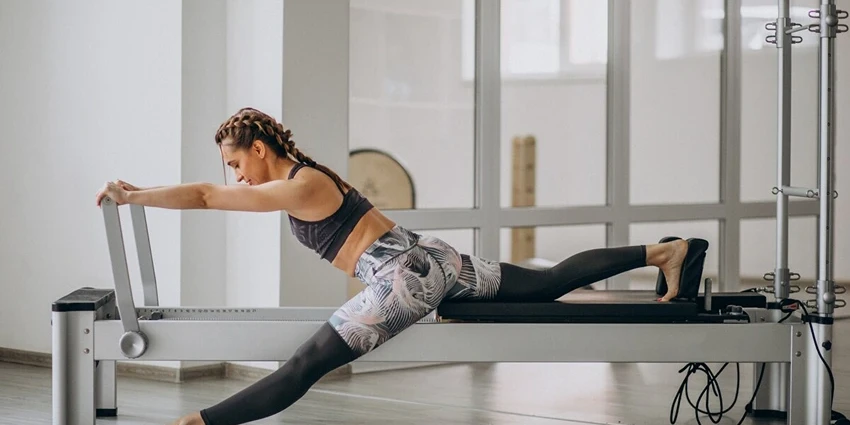As experts in martial arts strength training, we at Rac Women understand that the journey to martial prowess is as much about mental fortitude as it is about physical strength. Strength training for martial artists isn’t just about lifting weights; it’s about crafting a warrior’s physique that’s as durable as it is dynamic, capable of explosive power and enduring resilience.
In This Article
The Pillars of Martial Arts Strength Training

Progressive Overload: The Path to Increased Strength
To build the kind of strength that martial arts demands, one must adhere to the principle of progressive overload. This means gradually increasing the weight, frequency, or number of repetitions in your training regimen to challenge your muscles and stimulate growth.
Specificity: Training with Purpose
Every martial art has its unique demands. Whether it’s the explosive leg power for Taekwondo or the iron grip for Judo, your strength training should reflect the specific needs of your discipline.
Recovery: The Unsung Hero of Strength Training
Rest is not the enemy of progress; it is its ally. Adequate recovery between sessions is crucial for muscle repair and growth, ensuring you come back stronger every time.

Designing Your Martial Arts Strength Training Program
Crafting a strength training program that complements your martial arts training is an art in itself. It requires a balance of understanding your body’s needs, setting realistic goals, and ensuring that your regimen enhances your martial arts practice rather than detracting from it.
Assessment and Goal Setting
Before embarking on a strength training program, assess your current fitness level and martial arts skills. Set goals that are specific, measurable, achievable, relevant, and time-bound (SMART).
Balancing Training with Practice
Your strength training should not overshadow your martial arts practice. It should be a supplement, enhancing your abilities without causing burnout or overtraining.

Essential Strength Training Exercises for Martial Artists
Core Exercises for Stability and Power
A strong core is essential for martial arts. It provides stability for kicks, punches, and helps in the execution of complex techniques.
Table: Core Strength Exercises
| Exercise | Benefits | Repetitions |
|---|---|---|
| Planks | Builds endurance in core muscles | 3 sets of 30 seconds |
| Russian Twists | Enhances rotational power | 3 sets of 15 reps |
| Leg Raises | Strengthens lower abdominals | 3 sets of 12 reps |
Lower Body Exercises for Kicks and Stances
The power of a martial artist’s kick comes from the lower body. Strengthening the legs is crucial for speed, power, and stability.
Table: Lower Body Strength Exercises
| Exercise | Benefits | Repetitions |
|---|---|---|
| Squats | Increases overall leg strength | 3 sets of 10 reps |
| Lunges | Improves balance and unilateral strength | 3 sets of 10 reps per leg |
| Calf Raises | Strengthens the calves for explosive movements | 3 sets of 15 reps |

Upper Body Exercises for Punches and Blocks
A martial artist’s arms must be strong enough to deliver powerful strikes and withstand impacts.
Table: Upper Body Strength Exercises
| Exercise | Benefits | Repetitions |
|---|---|---|
| Push-Ups | Enhances chest and tricep strength | 3 sets of 15 reps |
| Pull-Ups | Builds back and bicep strength | 3 sets to failure |
| Dumbbell Shoulder Press | Improves shoulder stability and power | 3 sets of 12 reps |
Plyometric Exercises for Explosive Power
Plyometrics help develop the explosive power needed for quick, dynamic movements in martial arts.
Table: Plyometric Exercises
| Exercise | Benefits | Repetitions |
|---|---|---|
| Box Jumps | Increases explosive leg power | 3 sets of 8 reps |
| Medicine Ball Slams | Builds explosive core strength | 3 sets of 10 reps |
| Clapping Push-Ups | Enhances explosive upper body strength | 3 sets of 8 reps |
Timing and Frequency of Strength Training Sessions
To maximize the benefits of strength training in martial arts, it’s crucial to time your sessions to complement your martial arts training. This often means scheduling strength workouts on days you’re not practicing martial arts or after a martial arts session if done on the same day.
Table: Sample Weekly Strength Training Schedule
| Day | Activity | Notes |
|---|---|---|
| Monday | Martial Arts Practice | Focus on technique |
| Tuesday | Lower Body Strength Training | Squats, lunges, calf raises |
| Wednesday | Rest or Light Cardio | Recovery day |
| Thursday | Martial Arts Practice | Intensity day |
| Friday | Upper Body Strength Training | Push-ups, pull-ups, shoulder press |
| Saturday | Plyometrics and Core Training | Box jumps, medicine ball slams |
| Sunday | Rest | Active recovery or complete rest |
Synergizing Strength Training with Martial Arts Drills
Incorporate strength exercises that mimic martial arts movements to create a synergy between your strength training and martial arts drills. This approach ensures that the strength gained directly translates to improved martial arts performance.
Table: Strength Exercises Aligned with Martial Arts Techniques
| Martial Arts Technique | Strength Exercise | Benefit |
|---|---|---|
| Punches | Medicine Ball Throws | Develops explosive arm strength |
| Kicks | Resistance Band Leg Presses | Increases leg power |
| Grappling | Deadlifts | Enhances grip and pulling strength |

Advanced Strength Training Strategies
Periodization for Martial Artists
Periodization involves structuring your training into phases, each with a specific focus, such as building muscle mass, strength, or power. This method prevents plateaus and overtraining by continuously challenging the body in different ways.
Powerlifting and Olympic Lifting Techniques for Martial Artists
Incorporating powerlifting and Olympic lifting techniques can significantly enhance a martial artist’s explosive power and overall strength.
Table: Powerlifting Exercises for Martial Artists
| Exercise | Benefits | Sets and Reps |
|---|---|---|
| Squat | Builds leg and core strength | 5 sets of 5 reps |
| Bench Press | Increases upper body strength | 5 sets of 5 reps |
| Deadlift | Develops back and grip strength | 5 sets of 5 reps |
Nutrition and Supplementation for Strength Gain
Macronutrient Balance
A balanced diet is essential for martial artists. Focus on a mix of carbohydrates for energy, proteins for muscle repair, and fats for hormone regulation.
Table: Macronutrient Distribution
| Macronutrient | Percentage of Diet | Notes |
|---|---|---|
| Carbohydrates | 50-60% | Primary energy source |
| Protein | 20-30% | For muscle repair and growth |
| Fats | 20-30% | Supports hormone function and health |
Supplements for Recovery and Performance
While whole foods should always be the priority, supplements like whey protein, BCAAs, and creatine can aid in recovery and performance.
Table: Common Supplements for Martial Artists
| Supplement | Benefit | Recommended Intake |
|---|---|---|
| Whey Protein | Muscle repair | Post-workout |
| BCAAs | Muscle recovery | During/Post-workout |
| Creatine | Increased power output | Pre-workout |
Frequently Asked Questions
The best exercises are those that build functional strength and mimic martial arts movements, such as squats, deadlifts, and plyometric drills.
This depends on your martial arts schedule, but typically 2-3 times per week is sufficient to see improvements without causing overtraining.
Not if done correctly. Strength training, particularly when combined with plyometrics and speed drills, can actually improve your speed by increasing muscle power.
Ensure that your strength training complements your martial arts. Avoid overtraining by scheduling adequate rest and recovery, and focus on exercises that enhance your martial arts techniques.
Ellen Crandall
Meet Ellen, your fitness compass in the world of athletics, training, and gym culture. With a commitment to well-being and a penchant for all things workout-related, Ellen is here to guide you on your journey to a healthier, fitter you. Join the fitness revolution, led by Ellen, and embrace the power of an active lifestyle.




